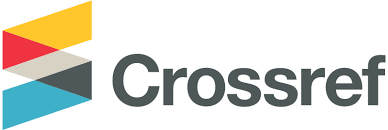STRATEGI PENGENDALIAN IMPOR SALMON-TROUT UNTUK KONSUMSI PASAR DALAM NEGERI
Abstract
Impor ikan salmon-trout semakin meningkat seiring bervariasinya menu masakan Jepang di Indonesia pada sejumlah hotel, restoran dan katering. Pengendalian impor terhadap komoditas harus dilakukan sebagai upaya mengurangi defisit neraca perdagangan. Pengendalian impor ikan salmon-trout sangat penting dilakukan karena merupakan produk pesaing ikan lokal dan berpotensi menurunkan permintaan terhadap ikan lokal. Oleh karena itu, penelitian ini bertujuan merumuskan strategi pengendalian impor ikan salmon-trout terutama untuk konsumsi hotel, restoran, katering, pasar modern (Horekapasmod) dan industri pengolahan ikan (re-ekspor). Data primer dan sekunder digunakan dalam penelitian ini. Data primer berasal dari wawancara dan diskusi dengan pemangku kepentingan impor salmon-trout pada bulan bulan Maret hingga September 2019 di DKI Jakarta dan Jawa Timur sebagai pintu masuk impor utama ikan salmon-trout. Data sekunder juga dikumpulkan dari berbagai institusi seperti BPS dan berbagai hasil penelitian beberapa perguruan tinggi. Data yang dikumpulkan kemudian dianalisis dengan menggunakan metode analysis hierarchy process (AHP) untuk merumuskan strategi pengendalian impor salmon-trout. Strategi pengendalian impor salmon-trout berdasarkan hasil analisis disusun berdasarkan prioritas. Prioritas pertama dengan bobot nilai 0,413 adalah sosialisasi dan edukasi kepada masyarakat tentang jenis ikan yang memiliki kandungan gizi sama dengan salmon-trout. Prioritas kedua adalah peningkatan ketersediaan dan perbaikan kualitas
ikan lokal yang potensial mensubstitusi salmon-trout dengan bobot 0.363. Prioritas ketiga adalah mengikuti kerjasama perdagangan internasional untuk ekspansi pasar ekspor khususnya untuk fillet salmon-trout dengan bobot sebesar 0,224. Pelaksanaan strategi tersebut diharapkan dapat
meningkatkan konsumsi ikan lokal yang asupan gizinya tidak kalah dengan salmon-trout sehingga alokasi impor dalam negeri dapat dikurangi secara bertahap.
Title: Salmon-Trout Import Control Strategies for Domestic Market Consumption
Salmon-trout imports has increased along with the growth of hotels, restaurants and restaurants with Japanese cuisine in Indonesia. Control of imports of commodities must be done as an effort to reduce the trade balance deficit. Import control of salmon-trout is very important because it is a local fish competitor and has the potential to reduce demand for local fish. Therefore, this study aims to formulate a salmon-trout import control strategy especially for hotels, restaurants, catering, retails and processing industry (re-export) consumption. Primary and secondary data were used in this study, primary data derived from interviews and discussions with salmon-trout importer stakeholders in March to September 2019 in DKI Jakarta and East Java as the main entry point for salmon-trout import. Secondary data was also collected and from various institutions such as BPS and various research results from several universities. The data collected then analyzed using the hierarchical process analysis (AHP) method to formulate salmon-trout import control strategies. Salmon-trout import control strategies based on the results of the analysis are arranged according to priority. The first priority with a weight value of 0.413 is socialization and education to the public about the types of fish that have the same nutritional content as Salmon-Trout. The second priority is increasing availability and improving the quality of local fish which has the potential to substitute Salmon-Trout with a weight of 0.363. The third priority is to participate in international trade cooperation for the expansion of export markets specifically for salmon-trout fillets with a weight of 0.224. The implementation of this strategy is expected to increase the consumption of local fish which are nutritionally inferior to salmon-trout so that the allocation of imports is gradually reduced.
Keywords
Full Text:
PDFReferences
Arthatiani, F. Y., & Deswati, R.H. (2020). Strategi Pengendalian Impor Mckarel Sebagai Bahan Baku Usaha Pemindangan. Jurnal Kebijakan Sosial Ekonomi Kelautan dan Perikanan Volume 10 No.1: 39-52. DOI: http://dx.doi.org/10.15578/jksekp.v10i1.8622.
Asche, F., Dahl, R.E., Gordon, D.V., Trollvik, T., & Aandahl, P. (2011). Demand Growth for Atlantic Salmon: The EU and Frech Markets. Marine Resource Economics, Volume 26, pp. 255–265. URL: http://www.bioone.org/doi/full/10.5950/0738-1360-26.4.255.
[BPS]. Badan Pusat Statistik. (2019). Statistik Ekspor Impor Tahun 2012-2019. Jakarta.
Efendi, R. (2009). Faktor-Faktor Penentu Impor Minyak Bumi di Indonesia. Jurnal Ekonomi dan Bisnis Vol. 8, No. 3: : 247 – 257.
Elvestad, C. (2009). Improving Market Access for Salmon Through Free Trade Agreements: The Role of Interests and Institutional Frameworks. Marine Policy (33) : 606–612. doi:10.1016/j.marpol.2008.12.004.
FAO. (2015). Globefish Highlights—A Quarterly Update on World Seafood Markets 37–42. Retrieved From:
https://www.nature.com/articles/s41538-018-0025-5.pdf.
Ghodsypour, S.H. & O’Brien, C. (1998). A decision support system for supplier selection using
an integrated analytic hierarchy process and linear programming. International Journal
of Production Economics Volumes 56–57: 199-212.https://doi.org/10.1016/S0925-5273(97)
-1.
Harsono, F. H. (2018). Ikan Kembung Justru Lebih Kaya Gizi Ketimbang Salmon. Retrieved From: https://www.liputan6.com/health/read/3667512/ikan-kembung-justru-lebih-kaya-gizi-ketimbang-salmon.
Helander, E. H. (2017). International Marketing: Reentering the Chinese Salmon Market: Case Study of Leroy Seafood ASA. Retrieved From: http://hdl.handle.net/10071/15837.
Imam, A. (2013). Faktor-faktor yang Mempengaruhi Impor Barang Konsumsi di Indonesia.
Jurnal Kajian Ekonomi dan Pembangunan
Vol 1 no.02: DOI: http://dx.doi.org/10.24036/
jkep.v1i02.121.
Indramadhini, L., & Sitompul, P. (2015). Pengaruh Kausalitas Ekspor, Impor dan GDP di Indonesia. Media Ekonomi 23 (1): 11-26.
Krugman, P. R., & Maurice, O. (2000). Ekonomi Internasional Teori dan Kebijakan. Edisi
Kelima. Jilid 2. Jakarta: PT. Indeks Kelompok Gramedia.
Laucereno, S.F. (2019). BPS : Konsumsi Makanan dan Minuman Tumbuh Melambat. Retrieved From:(https://finance.detik.com/berita-ekonomi-bisnis/d-4415759/bps-konsumsi-makanan-dan-minuman-tumbuh-melambat, 2019).
Mankiw, N.G. (2013). Pengantar Ekonomi Makro. Jakarta: Salemba Empat.
Pakpahan, A. (2012). Analisis Faktor-Faktor Yang Mempengaruhi Impor Daging Sapi Di Indonesia. Economics Development Analysis Journal 1(2): 1-9. https://doi.org/10.15294/edaj.v1i2.471.
Peraturan Pemerintah No 9 Tahun 2018 Tentang
Tata Cara Pengendalian Impor Komoditas Perikanan Dan Komoditas Pergaraman
Sebagai Bahan Baku Dan Bahan Penolong Industri.
Peraturan Menteri Kelautan dan Perikanan Republik Indonesia Nomor 58 Tahun 2018 Rekomendasi Pemasukan Hasil Perikanan Selain Sebagai Bahan Baku dan Bahan Penolong Industri.
Putri, A. (2017). Faktor-Faktor Yang Mempengaruhi Impor Kedelai Di Indonesia Tahun 1981-2011. Economics Development Analysis Journal 4(2), 98-105. Https://Doi.Org/10.15294/Edaj.V4i2.14809.
Rostin, Nusanta, A.W., Rafiy, M., Rumbia, R., Putera, A. & Saranani, F. (2018). Analytic
Hierarchy Process Method In Arranging Grand Design Of Food Estate In The Development
Of Fishing Industry In Southeast Sulawesi. Journal of Economics and Finance
(IOSR-JEF) 9(4): 69-74. DOI: 10.9790/5933-0904036974.
Sari, E.T. (2006). Peranan Customer Value Dalam
Mempertahankan Keunggulan Bersaing Pada Restoran Cepat Saji. Jurnal Manajemen Perhotelan, Vol. 2, No. 2: 68-75. http://puslit2.petra.ac.id/ejournal/index.php/hot/article/viewFile/16512/16504.
Setälä, J., Saarni, K. & Honkanen, A. (2001) The Quality Perceptions of Rainbow Trout Defined by different Fish Market Sectors. In: Microbehavior and Macroresults. Proceedings of the Tenth Biennial Conference of the International
Institute of Fisheries Economics and Trade, July 10-14, 2000, Corvallis, Oregon, USA. International Institute of Fisheries Economics and Trade (IIFET). Retrieved from:
https://ir.library.oregonstate.edu/concern/conference_proceedings_or_journals/r207tq32m.
Siswanto, E., Sinaga, B. M., & Harianto. (2018). Dampak Kebijakan Perberasan pada Pasar Beras dan Kesejahteraan Produsen dan Konsumen Beras. Jurnal Ilmu Pertanian Indonesia. Vol 23(2): 93-100. doi: 10.18343/jipi.23.2.93.
Sulaksono, S. (2015). Manfaat EPA dan DHA bagi pertumbuhan Anak dan Balita. Retrieved from: https://carakhasiatmanfaat.com.
Sukirno, S. (2000). Makro Ekonomi Moderen:Perkembangan Pemikiran Dari Klasik Hingae Keynesian Baru. Jakarta: PT Raja Grafindo Persada.
Tyagi, Rajesh; Das, Chandrasekhar. (1977). A methodology for cost versus service trade-offs in wholesale location-distribution using mathematical programming and analytic hierarchy process. Journal of Business Logistics; Hoboken Vol. 18, Iss. 2, (1997): 77-99. Retrieved from: https://search.proquest.com/openview/67baafdaa9d208566acf5932f8196993/1?pq-origsite=gscholar&cbl=36584.
Suryaningrum, T.D. (2008). Ikan Patin : Peluang Ekspor, Penanganan Pascapanen dan Diversifikasi Produk Olahannya. Squalen Vol 3 No.1: 16-23. Retrieved from: https://bbp4b.litbang.kkp.go.id/squalen-bulletin/index.php/squalen/article/view/166/123
Varina, F. (2018). Dampak Tarif Impor Jagung terhadap Kesejahteraan Pelaku Pasar Jagung Indonesia. Jurnal Agrosains dan Teknologi Vol 3 (1): 47-64.
Xie, J., Kinnucan, H.W., & Myrland, O. (2009). Demand elasticities for farmed salmon in world trade. European Review of Agricultural Economics, Volume 36, Issue 3, September 2009, Pages 425–445, https://doi.org/10.1093/erae/jbp028.
DOI: http://dx.doi.org/10.15578/jksekp.v10i2.9297
Indexed by:
---------------------------------------------------------------------------------------
Published by
Research Center for Marine and Fisheries Socio-Economic
in collaboration with
Indonesian Marine and Fisheries Socio-Economics Research Network
This work is licensed under a Creative Commons Attribution-NonCommercial-ShareAlike 4.0 International License.

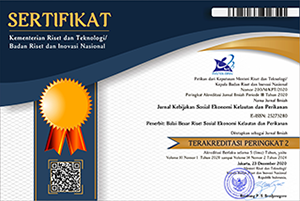
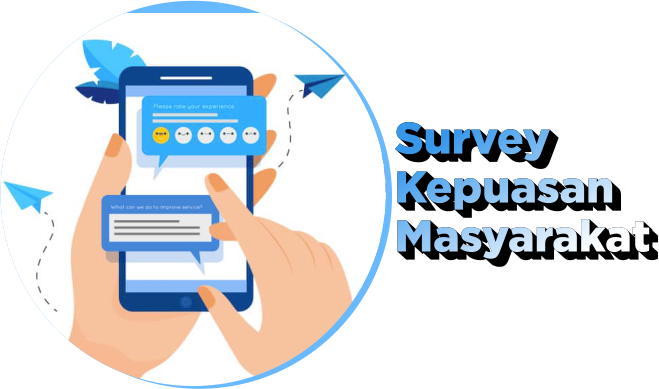






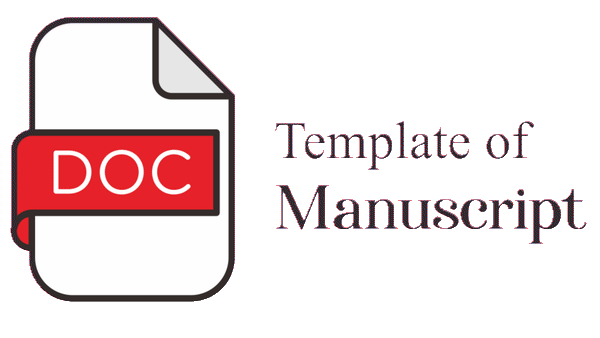
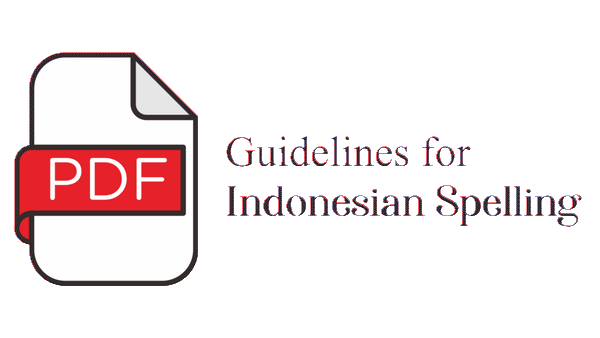
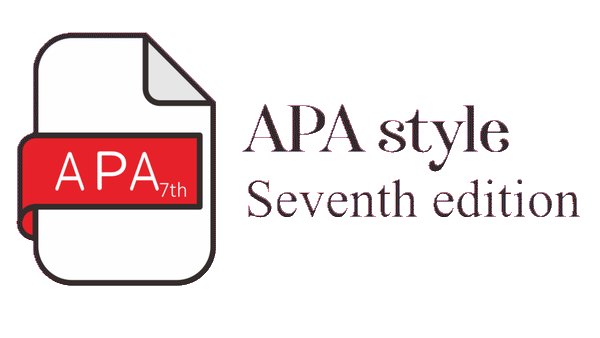


3.png)

